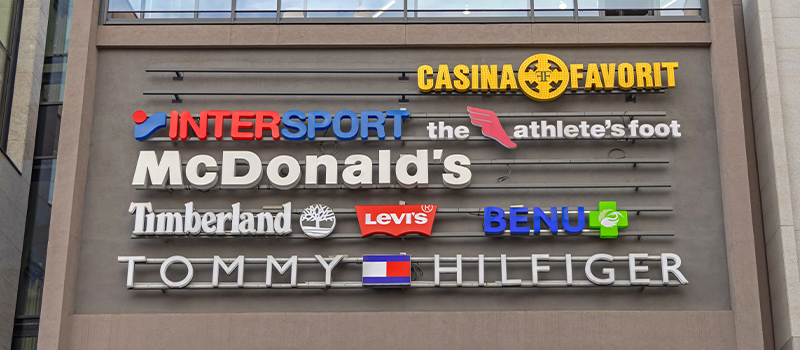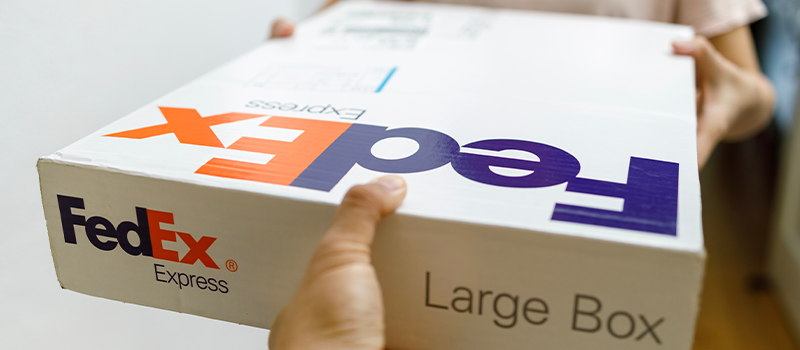Building a brand is non-negotiable if you want to grow your company’s reputation.
Where most businesses go wrong is their understanding of what brand building is.
Sticking a logo on a website is not building a brand. A brand is a complex machine of strategic and visual elements that work together to give customers an idea of who you are.
To achieve that, you need to set clear guidelines and ensure they are followed through brand compliance.
In this article, we will cover what brand compliance is, how it acts as a guardrail, and how it influences the success (or failure) of brands big and small.
What is Brand Compliance?

Brand compliance is about establishing guidelines and standards that define your brand’s visual identity, messaging, and overall user experience.
Compliance means ensuring that all brand-related activities, both internal and external, align with the brand’s essence and company values. It serves as the cornerstone for creating a cohesive and recognizable brand identity, image, and end-to-end experience.
Definition of Brand Compliance

Brand compliance means consistently applying brand guidelines and standards across all marketing channels, platforms, and touchpoints.
It covers everything like visual identity, typography, brand assets, tone of voice, and messaging, to name just a few.
By consistently following brand compliance guidelines, companies ensure that their brand’s look, feel, and messaging build an image of clarity that contributes to a good user experience.
PRO Brand Strategy BluePrint
Build Brands Like A Pro Brand Strategist

Why is Brand Compliance Important?

Brand compliance, ensuring visual consistency across all platforms, bolsters brand recognition and trust. This adherence to guidelines, as seen with brands like Coca-Cola, promotes customer loyalty and repeat business.
Maintaining a Consistent Brand Image

Brand compliance plays a pivotal role in maintaining a consistent brand image.
By adhering to brand guidelines, businesses ensure that their visual identity is uniform across all mediums. This includes logo usage, colors, and fonts.
This consistency enhances brand recognition and allows consumers to easily identify and connect with the brand.
One thing all iconic brands have in common is this visual consistency, like Coca-Cola and Cadbury, which both have trademarked colors and use the same fonts across their marketing materials.
Explore Brand Strategy
Programs & Tools
Impact on Customer Trust and Loyalty

Brand compliance directly influences customer trust and loyalty.
When customers encounter a brand that always delivers on its promises, both visually and through brand content, it fosters a sense of reliability and credibility.
This trust translates into long-term customer loyalty, repeat purchases, and positive word-of-mouth recommendations.
7 Advantages of Brand Compliance

Enhancing Brand Recognition and Visibility

By adhering to brand compliance standards, businesses create a distinct and recognizable visual identity.
Consistency in brand elements helps to build this recognition and ensures that a brand can stand out in a crowded marketplace.
Maintaining Brand Consistency

Brand compliance ensures that all brand communications are consistent, both through marketing campaigns and customer interactions.
When your marketing team is clear on brand guidelines, they can give customers a unified brand experience that reinforces the brand’s core values.
Improving Customer Trust and Loyalty

When a brand consistently delivers on its promises, it builds trust and fosters customer loyalty. 76% of customers expect consistent interactions across platforms and departments, yet only 54% feel they actually receive this.
The bottom line is that by maintaining brand compliance, businesses show their commitment to quality, professionalism, and integrity.
Mitigating Risk of Legal Issues

Being brand compliant also includes sticking to legal requirements and copyright regulations.
By complying with intellectual property laws, trademarks, and usage rights, companies can avoid legal issues and protect their brand reputation from false claims.
Boosting Marketing Effectiveness

Brand compliance simplifies the marketing process with a set of guidelines and templates. This streamlines the creation of on-brand marketing materials, saving time and resources.
With consistent messaging, marketing campaigns become much more impactful and effective.
Promoting Internal Cohesion and Alignment

Complying with brand guidelines also unifies team members and stakeholders by providing clear guidelines for everyone to follow.
It creates a shared understanding of the brand’s visual identity, tone of voice, and values to make sure everyone is on the same page.
Strengthening Competitive Advantage

A strong, consistent brand identity gives businesses a competitive edge.
In a saturated market, brands with a cohesive and compelling brand experience stand out from the competition. By prioritizing brand compliance, companies can stand out and attract a loyal customer base.
How to Create Effective Brand Guidelines

Creating clear brand guidelines is vital to ensure brand compliance. These guidelines serve as a roadmap for maintaining consistency, providing a reference for all brand-related activities.
They should cover various aspects of your brand, including visual identity, tone of voice, and usage guidelines or permissions for brand assets.
Steps to Create Brand Guidelines

- Define Your Brand Identity
Start by clearly defining your brand’s mission, values, and personality. You need to clearly understand your target audience and the emotions you want your brand to bring up for your customers.
- Visual Identity
Establish guidelines for logo usage, colors, typography, and imagery. Also, specify rules for the placement and sizing of logos, color palettes, and preferred fonts to keep it consistent.
- Tone of Voice
Define the tone and style of your brand’s messaging. Decide whether your brand voice is friendly, authoritative, playful, or professional, and provide examples of the preferred language and style to guide content creation.
- Usage Guidelines
Specify how brand assets, such as logos, images, and videos, should be used across different mediums. Then, outline rules for social media, digital content, print materials, and any other platforms you use for marketing.
Components to Include in Brand Guidelines

- Brand Strategy
Provide guidelines about how your brand should approach the market, from creating a strategy to showcasing your brand personality and communication.
- Logo Usage
Provide guidelines for logo placement, sizing, clear space requirements, and variations for different backgrounds or contexts.
- Color Palette
Define the primary and secondary colors that represent your brand, with specific color codes for digital and print use. It’s not enough to say ‘red’ is your house color, so having specific hex codes guarantees consistency.
- Typography
Specify the fonts and font sizes to use in different scenarios, such as headings, body text, and captions. Make sure you also consider readability and accessibility when selecting fonts, to make sure your audience can engage with your content.
- Imagery and Photography
Provide guidelines for selecting images that align with your brand’s visual identity. You can include details like preferred styles, image treatments, and composition.
- Tone and Style
Describe the desired tone and style of communication, including examples of preferred language, sentence structure, and vocabulary. Everyone from freelancers to in-house marketing should be clear on these guidelines and be able to craft content that sounds like your brand voice.
Regular Monitoring and Auditing

Regularly monitor brand compliance to ensure it’s consistent.
Conduct audits to identify any areas where the brand guidelines are not being followed, and take corrective measures.
Ensuring Clear Communication of Brand Guidelines

Effectively communicate brand guidelines to all team members and external partners, then provide training to ensure everyone understands and follows the guidelines.
Preparing digital resources can also help keep everyone up to date, like a brand book.
Foster a sense of ownership and responsibility for upholding brand standards among your employees, and people will stick to it.
Implementing a Brand Compliance Committee

Establish a brand compliance committee responsible for overseeing brand guidelines, monitoring compliance, and addressing any issues.
This committee can consist of representatives from different departments to ensure everyone is clear on the regulations.
Managing Non-Compliance Issues

Develop a process to address and manage non-compliance issues as soon as possible. Provide feedback, guidance, and support to individuals or teams who stray away from the brand guidelines.
This helps to correct the course and reinforce the importance of brand compliance.
5 Strategies to Ensure Brand Compliance

1. Implementing Brand Management Software

Brand builders can utilize management software to centralize brand assets, streamline workflows, and ensure easy access to up-to-date brand guidelines.
These tools simplify the approval process and make it easy for team members and stakeholders to collaborate.
2. Regular Training and Retraining

Offer regular training sessions on brand compliance to keep employees updated on best practices.
Every so often, refresher courses and retraining sessions can reinforce the importance of brand compliance and address any changes.
3. Effective Communication and Feedback Mechanisms

Establish clear communication channels for feedback and questions about brand compliance and encourage open dialogue. It’s usually a good idea to provide a platform for team members to seek clarification or report potential issues.
Regularly communicate updates or reminders related to brand guidelines to keep everyone informed.
4. Regular Review and Update of Brand Guidelines

Brand guidelines should be living documents that evolve with the brand. Schedule regular reviews to ensure they remain relevant and aligned with the brand’s vision and industry trends.
Update the guidelines as needed to reflect any changes in brand strategy, visual identity, or messaging.
5. Rewarding Compliance

Recognize and reward individuals and teams consistently demonstrating brand compliance.
You can do this through internal recognition programs, incentives, or acknowledgments.
At the same time, address non-compliance issues constructively with guidance and support.
Effective Software for Brand Compliance

Brand compliance software plays a key role in streamlining the management process, ensuring consistency and collaboration.
These tools help businesses maintain control over brand assets, workflows, and approvals while promoting brand compliance across different teams and mediums.
Different Software Solutions

There are multiple types of software solutions, including:
Brand Asset Management (BAM): Allows companies to organize their digital assets like logos, images, videos, and templates. It ensures easy access to approved assets, limiting the risk of off-brand usage.
Workflow Management Software: Helps to streamline approval processes and ensure that brand communications are reviewed as necessary before publishing. It provides visibility and accountability throughout the content creation cycle.
Digital Asset Management (DAM): Enables businesses to efficiently manage and distribute digital assets, including brand guidelines. It ensures that team members have access to the most up-to-date and on-brand assets.
Marketing Resource Management (MRM): Helps businesses plan, execute and track marketing campaigns in real-time while maintaining compliance. It provides a centralized platform for managing workflows, collaboration, and asset distribution, ensuring consistent messaging.
Content Creation and Collaboration Tools: Adobe Creative Cloud is a great example of content creation software. These tools help team members collaborate seamlessly, creating and editing content while adhering to brand guidelines. They often include features for version control, commenting, and approval.
Social Media Management: Allows businesses to schedule, publish, and monitor social media content and maintain brand consistency. It lets marketing teams manage multiple social media accounts while keeping things consistent across all platforms.
Project Management Software: Helps teams stay organized and ensures projects are carried out in line with brand compliance guidelines. It provides task management, scheduling, and progress tracking to keep everyone on the same page.
Over To You
Brand compliance is a powerful tool for creating a strong and consistent brand identity. Adhering to brand guidelines and standards lets your business enhance brand recognition, build loyalty, and strengthen its competitive advantage.
Effective brand compliance strategies need clear guidelines, regular monitoring, and training. Software solutions can also help you streamline these workflows to ensure consistency.
With a dedicated focus on brand compliance, businesses can establish a brand that resonates with their target audience, drives conversions, and maintains a positive brand image. In other words, prioritizing brand compliance is an investment in long-term success.
FAQs
1. What does brand compliance mean?
Brand compliance refers to the adherence toa set of guidelines and standards that define a brand’s visual identity, messaging, and overall user experience. It ensures consistency and cohesiveness across all brand touchpoints.
2. How does brand compliance contribute to a consistent brand identity?
Brand compliance ensures that all brand-related activities align with established guidelines, including visual elements, messaging, and tone of voice. Following these guidelines creates a unified, recognizable brand identity.
3. Why is brand compliance important for customer trust and loyalty?
Brand compliance builds trust by consistently delivering on the brand promise. When customers see that your brand is always consistent, they know what to expect. It creates a sense of reliability and credibility.
4. What are the key components of brand compliance?
Brand compliance encompasses various elements, including visual identity (logos, colors, typography), messaging (tone of voice, brand personality), and usage guidelines for brand assets across different mediums.
5. How can businesses ensure brand compliance across teams?
Businesses can ensure brand compliance by providing clear and comprehensive brand guidelines and offering training sessions. Brand management software can also help. You should reward compliance and manage non-compliance issues to ensure all employees stick to the plan.
Remember, building and maintaining brand compliance requires ongoing effort and attention. By prioritizing brand consistency, businesses can establish a powerful and enduring brand presence that drives success.
On-Demand Digital Program
Brand Master Secrets
Make the transition from hired-gun to highly valued brand strategist in less than 30 days. The systems, frameworks and tools inside this comprehensive program are all you need to level up.







